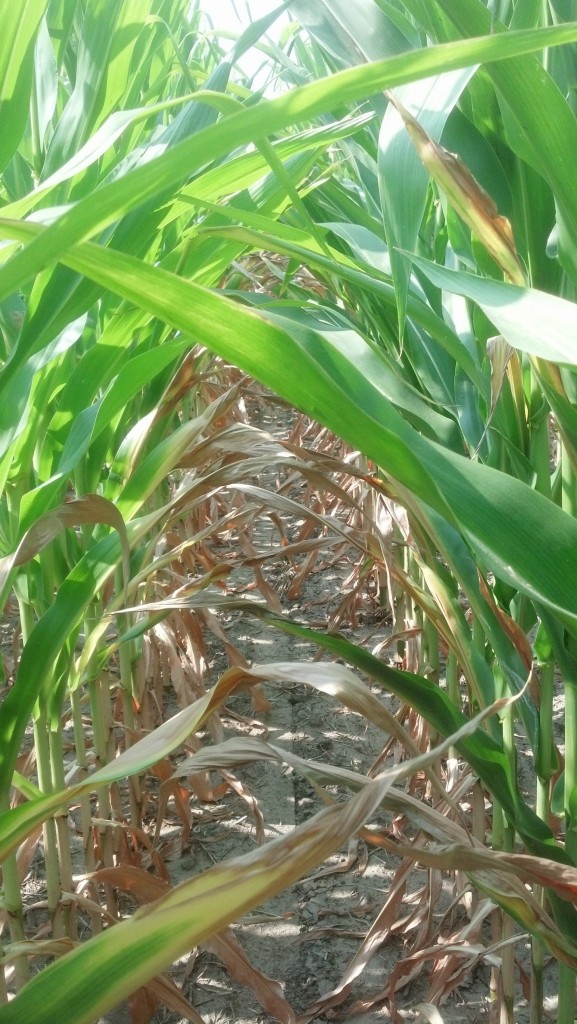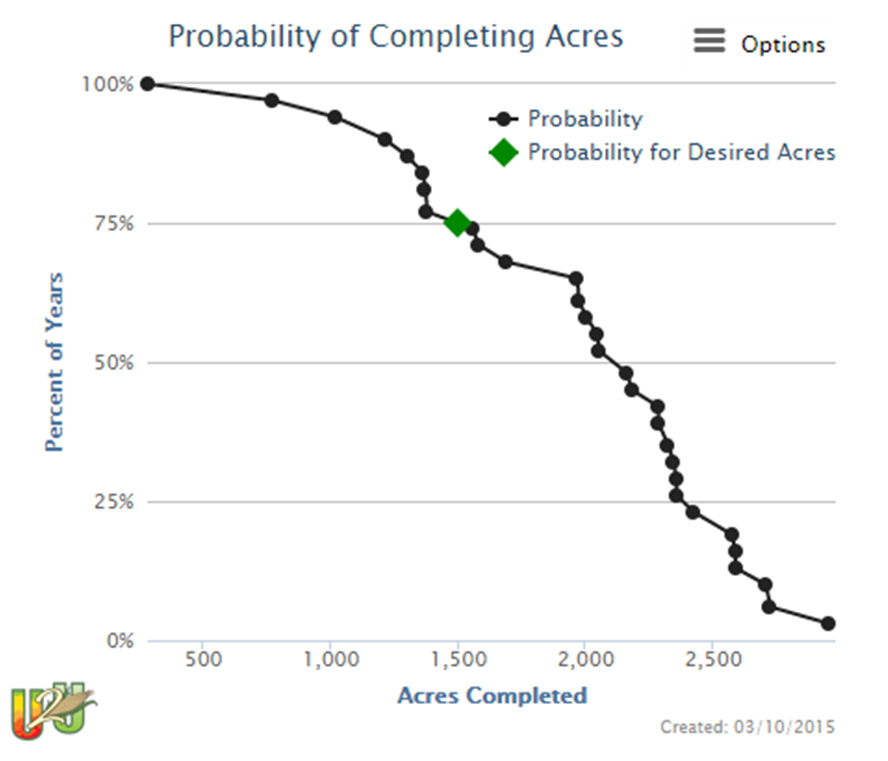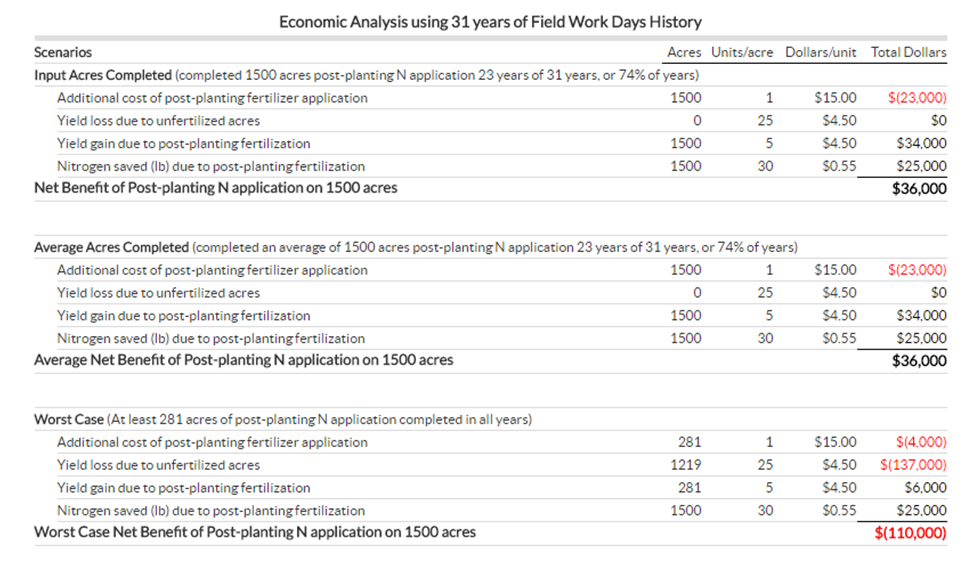Farmers can conserve nitrogen by applying it when corn can most benefit from its application, reducing nitrogen in the water supply by keeping it in the growing crop. How can they do so? By applying some to get the crop started and the rest after the corn is out of the ground and actively growing.
The Useful to Usable initiative has developed a new tool for use by farmer, farm managers, and crop advisors that evaluates the feasibility of transitioning to or continuing use of split applications of nitrogen during the growing season.
Farmers who do not sidedress nitrogen on an active crop often do so for multiple reasons. One main concern lies in the uncertainty around having the time to get across all those acres when the weather allows one to do so, before the corn grows too large to put machinery in the field. The Split N DST helps with this risk by using local weather data and fieldwork days compiled by the National Agriculture Statistics Service (NASS), to estimate how likely a farmer can apply nitrogen at sidedress across all his or her acres.
This variable weather concern also can translate to dollars lost in corn. The Split N DST also calculates the probability for profit or loss by sidedressing nitrogen. The tool gives an analysis of the average given the user inputs, but can also generate best and worst case scenarios for those more or less risk-averse.
The tool also uses user inputs of nitrogen cost, potential yield loss and potential yield gain to calculate the economic break-even number of acres that would need to be sidedressed. More acres covered results in economic benefit versus all pre-plant nitrogen application. Fewer than the break-even number of acres sidedressed means a farmer would have been better suited economically to apply all nitrogen before and at planting.
Try the tool out yourself at agclimate4u.org and be sure to leave a reply if you found it useful or have suggestions for improvement!




